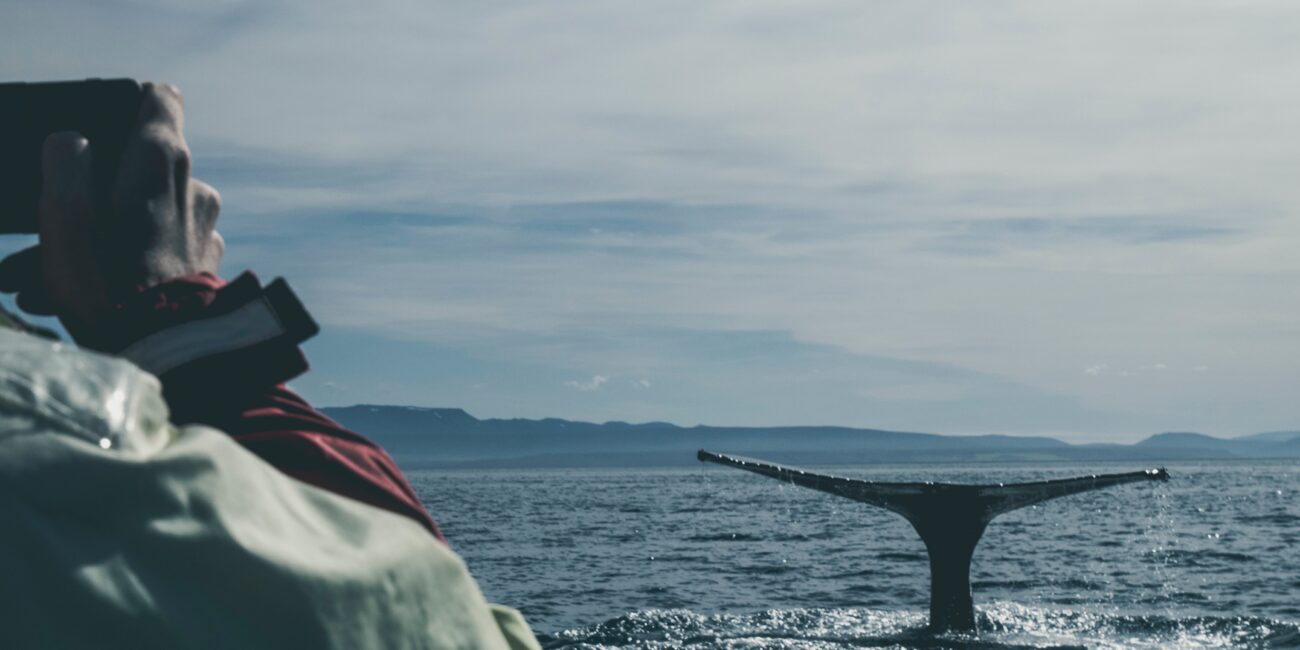Intelligent, social and curious, whales have earned themselves a reputation as the friendly giants of our underwater world. Encountering them in the wild is often a transformative experience that many remember for the rest of their lives. Read on to learn more about some spectacular whale watching destinations around the world…
South Africa
As well as being home to the whale-watching capital, Hermanus, there are nearly thirty different species of whale and dolphin that can be seen off the coast of South Africa. Their migratory route takes them through several of South Africa’s Marine Protected Areas, including Table Mountain National Park, Sardinia Bay, De Hoop Nature Reserve, Pondoland and Isimangaliso – making it one of the most desirable whale watching locations in the world.
The season falls over winter in South Africa, where sightings can begin as early as May and stretch through to early December, with peak months being considered July-September. During this time, most of the migratory pods are travelling from the Antarctic along the eastern coast of Southern Africa in search of warmer waters to breed and calve in. Their migration will then return south, towards the nutrient rich waters of the Antarctic until the start of the final month of the year.
With deep waters running close to the shore, both migratory southern right whales and resident Bryde’s whales are able to swim in close vicinity of the coastline at Hermanus – meaning that, as well as during boat trips, it is possible to sight these impressive mammals from the beaches and clifftop paths surrounding the waters.
Other destinations for whale watching include False Bay, which is a short journey from Cape Town, home to colonies of Cape fur seals and lies along the migratory route of Bryde’s, humpback and southern right whales during the winter months; De Hoop Nature Reserve, where the notable De Hoop Dunes make for an iconic whale watching spot; Plettenberg Bay and the Garden Route which is home to resident species such as Bryde’s and occasionally orca, and where migrating pods pass during May and June as they travel north before returning during October and November; and the Kwa Zulu Natal coast, where you will likely see the highest numbers of humpback whales and where, from late June and early July right through to November, whales migrate to the Indian ocean from the Mozambique coast before returning south, following the Mozambique Plateau continental shelf that passes close to the shoreline.
Argentina
The azure waters surrounding Patagonia are home to orcas, humpback, southern right and blue whales.
One enticingly wild destination, the UNESCO-registered nature reserve of Península Valdés which is loosely linked to the Argentinan mainland, throngs with whales in the austral winter (during the Northern Hemisphere’s summer).
Its untamed shoreline seems to shift with the moving elephant seals, southern sea lions and migratory birds that line the coastal lagoons, mudflats, beaches and wetlands, whilst the resident wildlife further inland seems wilder still.
Southern right whales can be sighted between June and December, during their breeding season, whilst orcas make an appearance in the waters from November through to April and elephant seals are best seen between August and October.
In Patagonia Azul, Tompkins Conservation is working to create a new park with marine conservation at its core. The Argentine Sea is one of the most productive oceans on the planet, and the Patagonia Azul vision encompasses more than 200 kilometers of coastal habitat that harbors spectacular biodiversity.
“The objective of the new project is to restore natural ecosystems and threatened populations of native species on land and underwater, while promoting an alternative local economy that is sustainable over time and respectful of nature.”
You can stay up to date with our conservation partner, Tompkins Conservations and their project in Patagonia Azul here.
Panama
Panama is one of the world’s few countries that hosts humpback whales from both the Northern and Southern Hemisphere. Several hundred visit Panama’s Pacific coast throughout July-October, after feeding in Antarctica and Chile during the Southern Hempisphere summer months, whilst the Northern Hemisphere whales travel to Panama to breed between December-April.
Humpback whales can be sighted along the Pacific coast from regions such as Boca Chica Golfo de Chiriqui, Panama City, Isla Iguana and Las Perlas Archipelago, whilst a few sites on the Caribbean coast prove a superb destination for Bottlenose dolphin watching, and areas such as Golfo Ciriqui, Las Perlas Archipelago, Montijo, and Santa Catalina y Mariato along the Pacific coast are brilliant for Pantropical spotted dolphins.
Canada
Some 20,000 grey whales pass Vancouver Island’s Pacific coast in spring and the waters surrounding this region are also home to some of the most researched pods of orca in the world. Alongside these recognisable mammals, you can find humpback and minke whales, as well as sea otters, seals, sea lions, bald eagles and a myriad host of other wildlife. Head to the Johnstone Strait between May-September for orca sightings and spot the migrating greys between March-April.
In Québec you will find blue, humpback, fin, minke and beluga whales, a hotspot where three currents collide near Tadoussac in the Gulf of St Lawrence’s mouth and stimulate plankton production for the whales to feast on. Head to Saguenay Fjord between June-September to sight the bright-white beluga and marvel at seals, porpoises, dolphins and snow geese throughout March-May and October.
If you would like to learn more about our whale watching recommendations and begin planning your bespoke journey with purpose, please get in touch with one of our experts at connect@stg-journeyswithpurposeorg-staging.kinsta.cloud.








